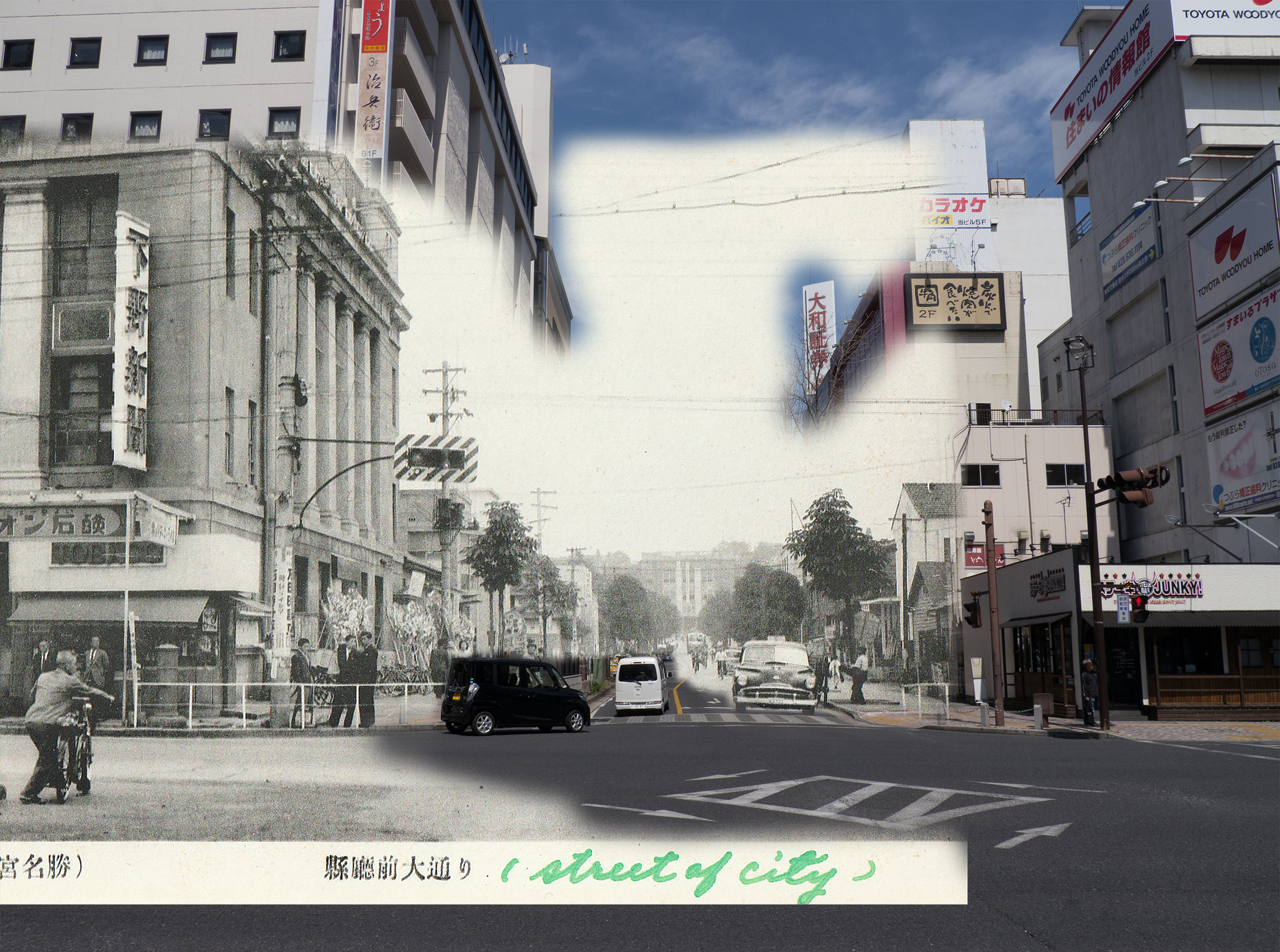This is a set of rephotographs that I took in Utsunomiya, Tochigi, Japan in April 2019. I’ve been taking rephotographs for a decade and wrote a bit about it in my article Traveling Photography.
The originals of Utsunomiya were a bundle of post cards I purchased online. They were made for sale to visitors to Japan as it recovered after World War 2.
Utsunomiya Futaarayama Jinjya
This shrine sits above the old central Utsunomiya and Orion-Doori pedestrian mall. In fact this shrine predates the city – the city was built at its entrance. Legend has it that the shrine started in the 300s. In 838 Futaarayama moved to its current location.
The main building here was rebuilt in 1877. It was destroyed by fire and earthquake many times before that.
Locals call the shrine by its nickname, Futaarasan.

Tochigi Prefecture Capital Building
This is the Tochigi capital building (栃木県庁, Tochigi kencho). It was constructed in 1938. It survived World War 2 despite a brutal fire bombing of Utsunomiya on July 12, 1945.
It was moved in 2008 and renamed the Showa Building. The Showa period in Japan was 1926-1989. The current capital building, Tochigi’s fourth, was built in its place.

Utsunomiya’s Kenchoumae
This is the intersection of Center Street (中央通り, Chuo Doori) and Main Street (大通り, Oo Doori). In the distance is the prefectural capital building for Tochigi.
Although most streets don’t have names in Japan, in contrast most signalized intersections do. Usually there is a crossing name sign hanging where an American would expect a street name sign. This intersection is called Kenchoumae, “In front of prefecture capital” (県庁前).
Up Center Street a few blocks the Tochigi capital building can be seen in 1952. On the left was the offices of Tochigi’s Shimotsuke News. Coming towards us on Center Street was a Plymouth Cambridge. I used that car to roughly date the photos, since it was manufactured from 1951-1953. Maybe this is actually 1955 or so?
Another slight inaccuracy in my work can be seen in the car sizes. The white car on the left is a Daihatsu Hijet. The Hijet is 58 inches wide, to the Cambridge’s 72 inches. The scale is a bit off.

Earlier I mentioned the napalm and incendiary bombing by the US Army Air Corps in 1945. The epicenter was back to the right of the photographer just 250 meters from Kenchoumae Intersection. It was at Utsunomiya Central Elementary School, one of the few landmarks visible through cloud cover that night.
There are a few more postcards in the set that I did not rephotograph yet. You can see them on Flickr. It’s not easy to find old photos of Utsunomiya. I hope you enjoy them.